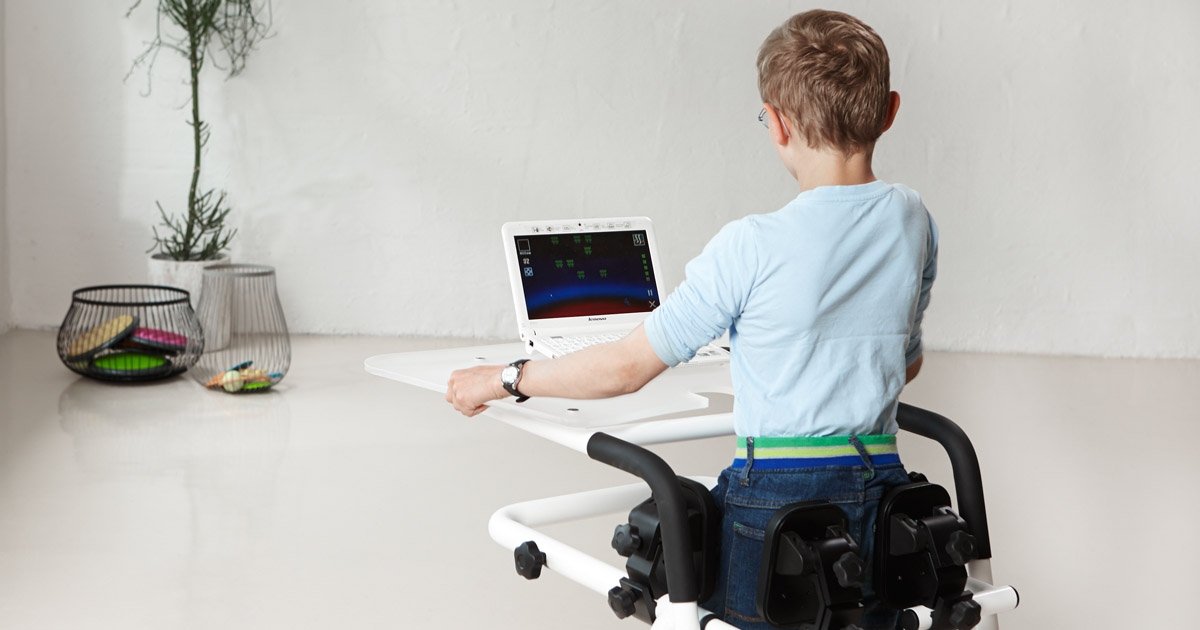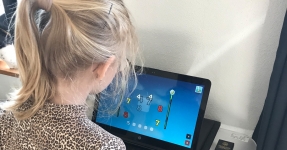Active stretching gives good results

Stiff muscles are a common symptom of cerebral palsy. Children with cerebral palsy can have limited dorsal flexion, that is, difficulties bending their feet upwards towards the shin, or limited knee extension, where it is difficult to extend the knee. It can be painful to try to bend the foot or leg in the direction that is difficult for the child. Therefore, it is important to stretch and to train flexibility of joints and muscles. This helps the child to be able to move these muscles in daily life activities.
The purpose of active, as well as passive, stretching is to maintain or increase mobility of muscles and joints that have limited range of motion.
Passive and active stretching
When a physiotherapist, parent or other person moves the child’s foot back and forth, it is called passive stretching. This is because the child isn’t doing the stretching him/herself, but is rather being passively stretched by others. This kind of stretching can be painful for the child, because his/her joints aren’t used to being stretched to extreme positions. When someone else is doing the stretching for the child, the pain is felt more clearly than if the child itself has control of the movements. Passive stretching should, then, be done with great care and consideration, in order to avoid unnecessary discomfort for the child, and to avoid additional injury.
In active stretching, the child must participate him/herself actively. This can be, for example, by doing tasks that can only be completed by stretching specific muscles. In active stretching, the aim is to create ways for the child to stretch by doing movements that can be directly transferred to daily life situations. In this way, it will also be easier for the child to stop the exercise if it becomes too painful, and thus avoid injury.
It can be hard to explain to a child that it is necessary to do exercises every day, if they are associated with discomfort. In active stretching, having a task to do gives purpose to the stretching, and the child actively participates in defining the task. To achieve the best result, there must be some kind continuity in the stretching exercises. This can be done by intensifying stretching for a period of time, followed by a break. A break can be motivating for the child, because it gives more time to do other fun activities.
Active stretching with Happy Rehab
Seven Danish municipalities participated for a year and a half in testing and developing Happy Rehab. At this time, a research project was conducted in cooperation with research physiotherapists from Hvidovre Hospital and IKH Region Midt.
The study shows that training in the dynamic standing support system, Happy Rehab, gives a significant increase in active and passive dorsal flexion. The study is based on data collection from six children from 4 to 10 years of age, with GMFCS I-III[1]. Data was collected during an initial control period of 10 weeks, followed by a 10-week intensive training period, with five training sessions a week. During training sessions, the children trained active movements with dorsal flexion using Happy Rehab.
Results showed that the children achieved an increased dorsal flexion of the ankle joint of 5-10 degrees, with extended knee. At the same time, they achieved a marked effect of increased gross motor function measured by GMFM-IS.
Using Happy Rehab, the children actively stretched muscles and joints while operating the computer game in the standing support system. This made it easier to do exercises every day, because the computer game and the tasks it contains are often motivating for the children.
[1] Gross Motor Function Classification System (GMFCS) is a system that categorizes the gross motor symptoms of cerebral palsy in five levels.





mail@iaid.dk T:+45 86 78 99 33